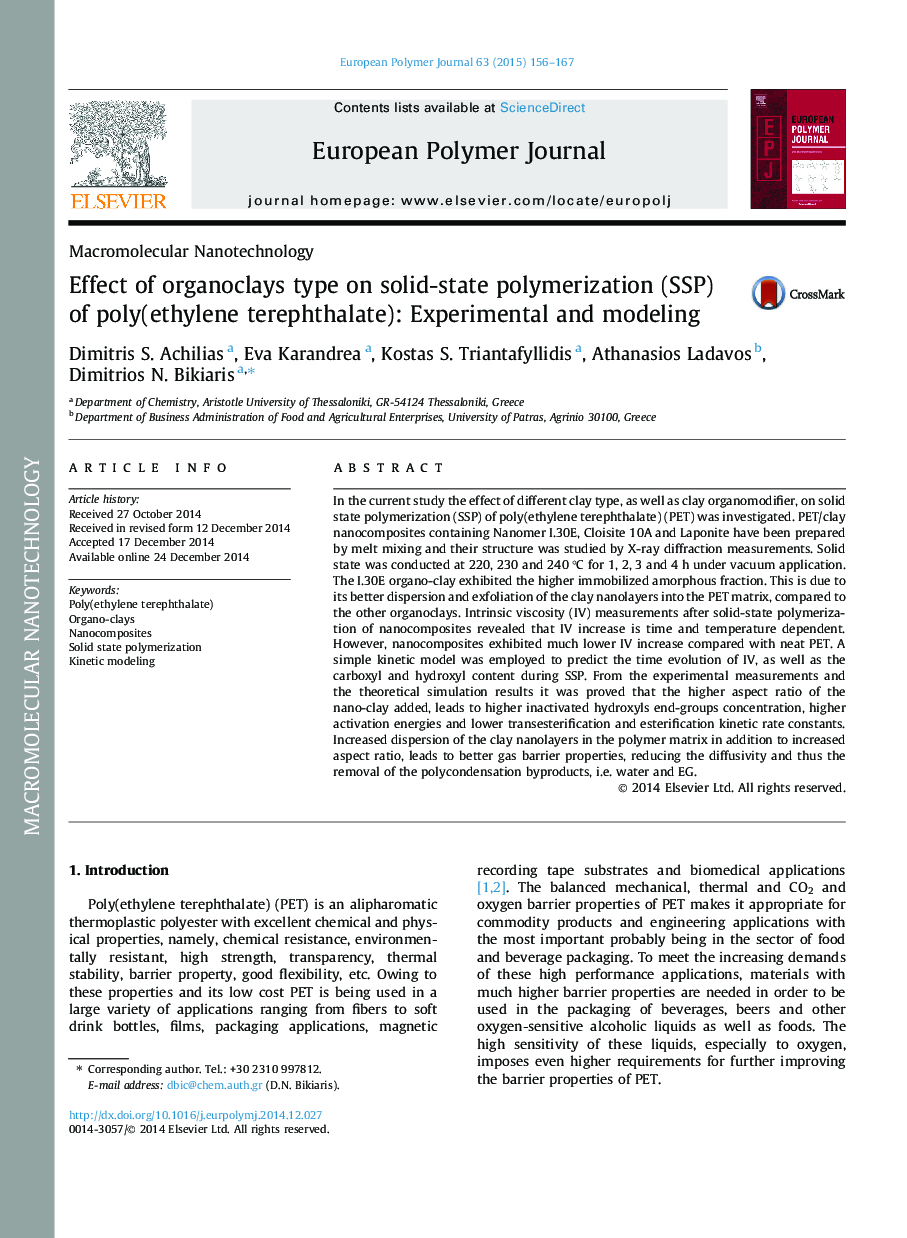| کد مقاله | کد نشریه | سال انتشار | مقاله انگلیسی | نسخه تمام متن |
|---|---|---|---|---|
| 1395417 | 1501372 | 2015 | 12 صفحه PDF | دانلود رایگان |

• The effect of different clays on solid state polymerization of PET was evaluated.
• All used clays delay the molecular weight increase during SSP.
• The finer dispersion of clays leads to higher reduction of molecular weight.
• Mathematical modeling was used to simulate the effect of nanoclays on SSP kinetics.
In the current study the effect of different clay type, as well as clay organomodifier, on solid state polymerization (SSP) of poly(ethylene terephthalate) (PET) was investigated. PET/clay nanocomposites containing Nanomer I.30E, Cloisite 10A and Laponite have been prepared by melt mixing and their structure was studied by X-ray diffraction measurements. Solid state was conducted at 220, 230 and 240 °C for 1, 2, 3 and 4 h under vacuum application. The I.30E organo-clay exhibited the higher immobilized amorphous fraction. This is due to its better dispersion and exfoliation of the clay nanolayers into the PET matrix, compared to the other organoclays. Intrinsic viscosity (IV) measurements after solid-state polymerization of nanocomposites revealed that IV increase is time and temperature dependent. However, nanocomposites exhibited much lower IV increase compared with neat PET. A simple kinetic model was employed to predict the time evolution of IV, as well as the carboxyl and hydroxyl content during SSP. From the experimental measurements and the theoretical simulation results it was proved that the higher aspect ratio of the nano-clay added, leads to higher inactivated hydroxyls end-groups concentration, higher activation energies and lower transesterification and esterification kinetic rate constants. Increased dispersion of the clay nanolayers in the polymer matrix in addition to increased aspect ratio, leads to better gas barrier properties, reducing the diffusivity and thus the removal of the polycondensation byproducts, i.e. water and EG.
Figure optionsDownload as PowerPoint slide
Journal: European Polymer Journal - Volume 63, February 2015, Pages 156–167